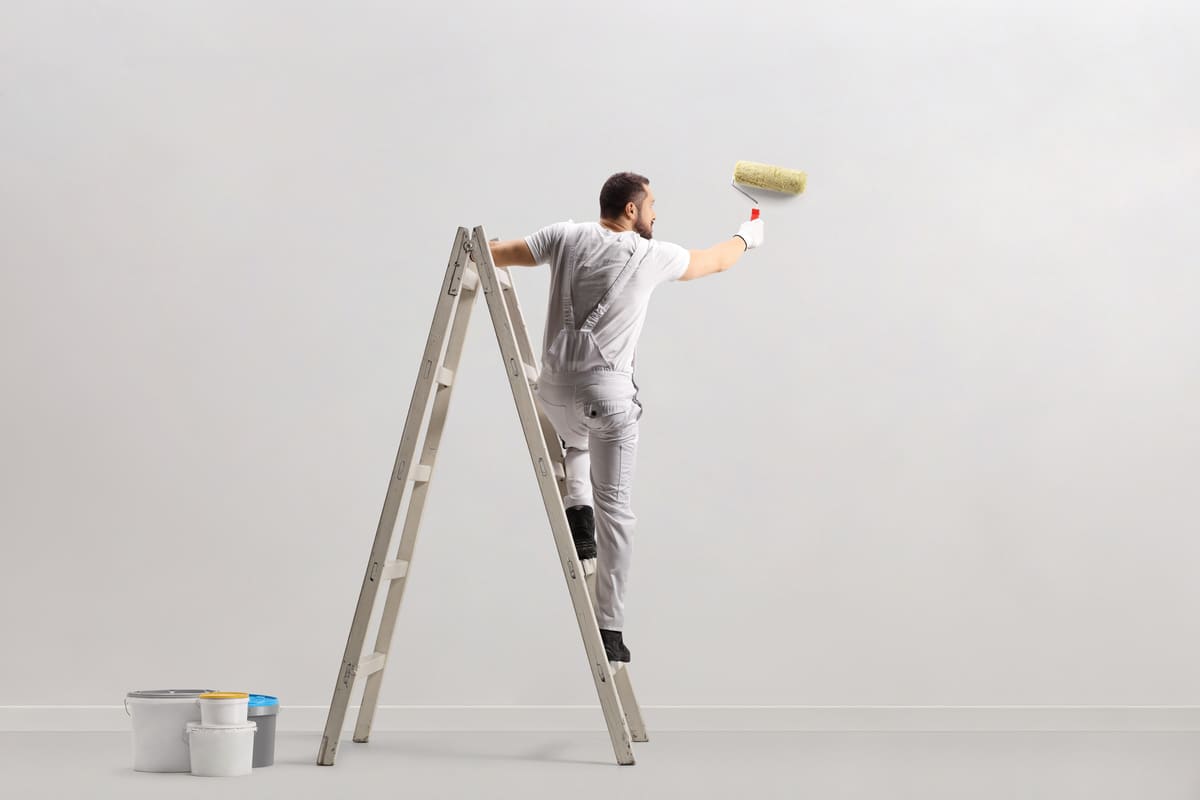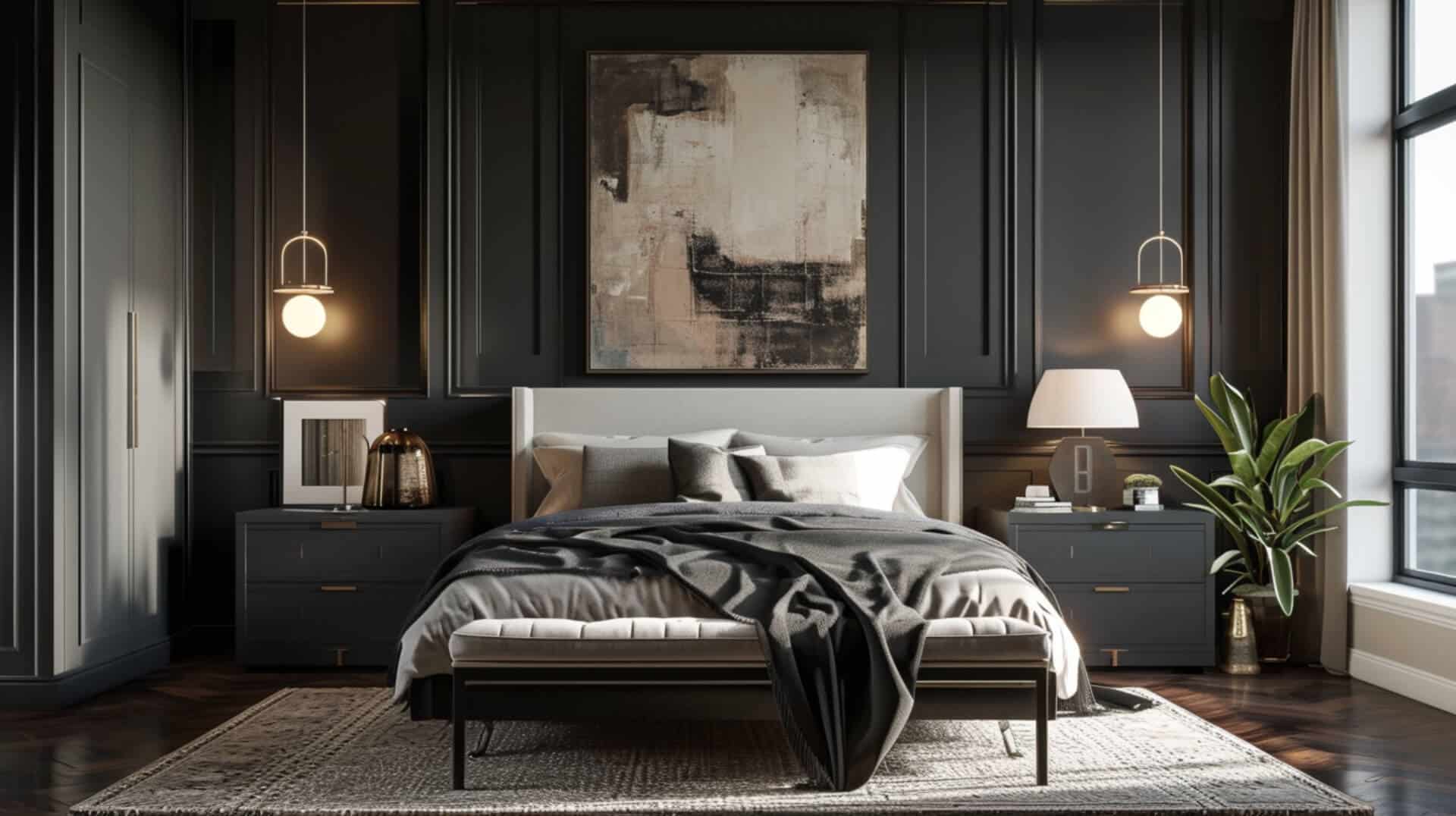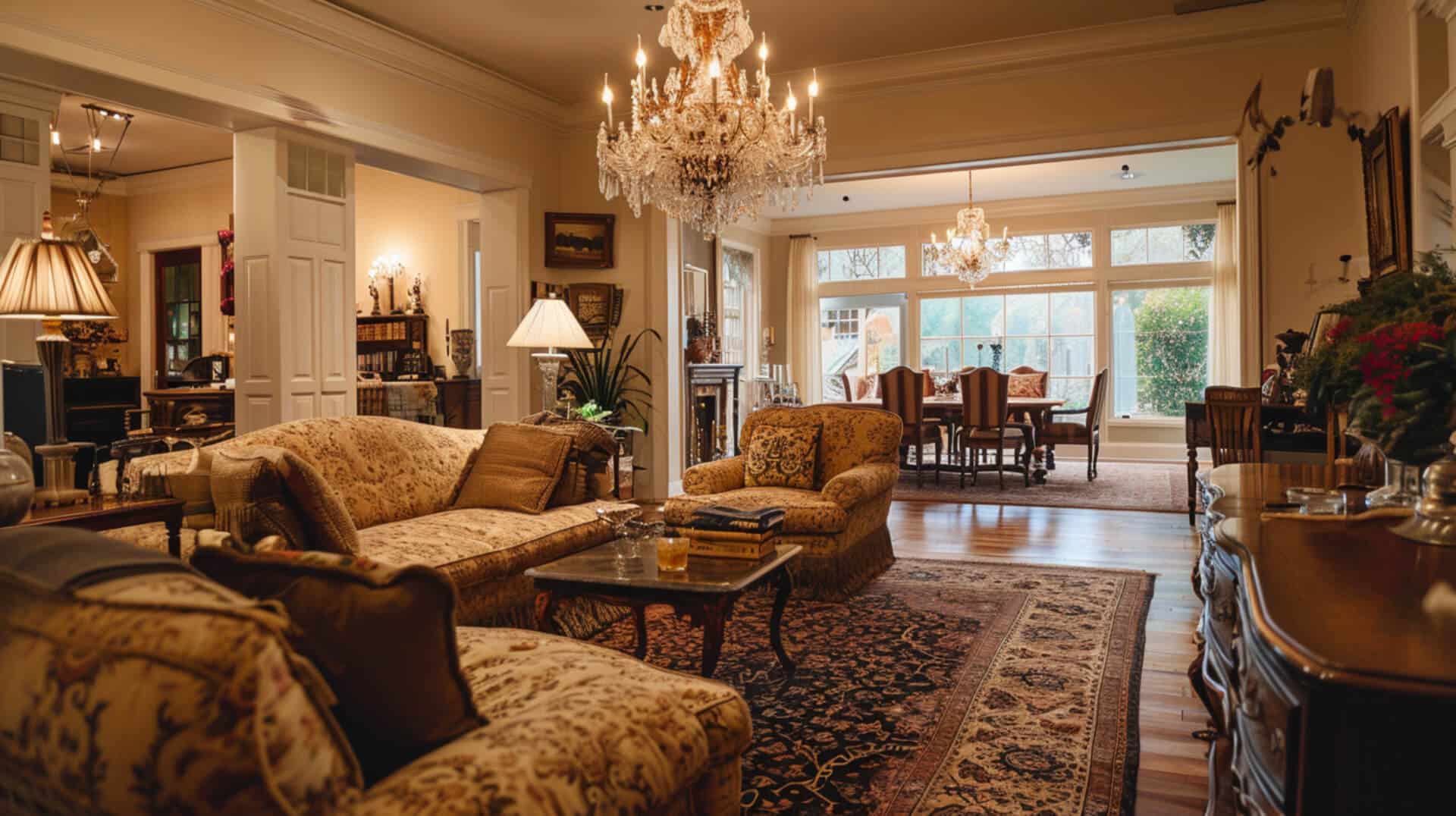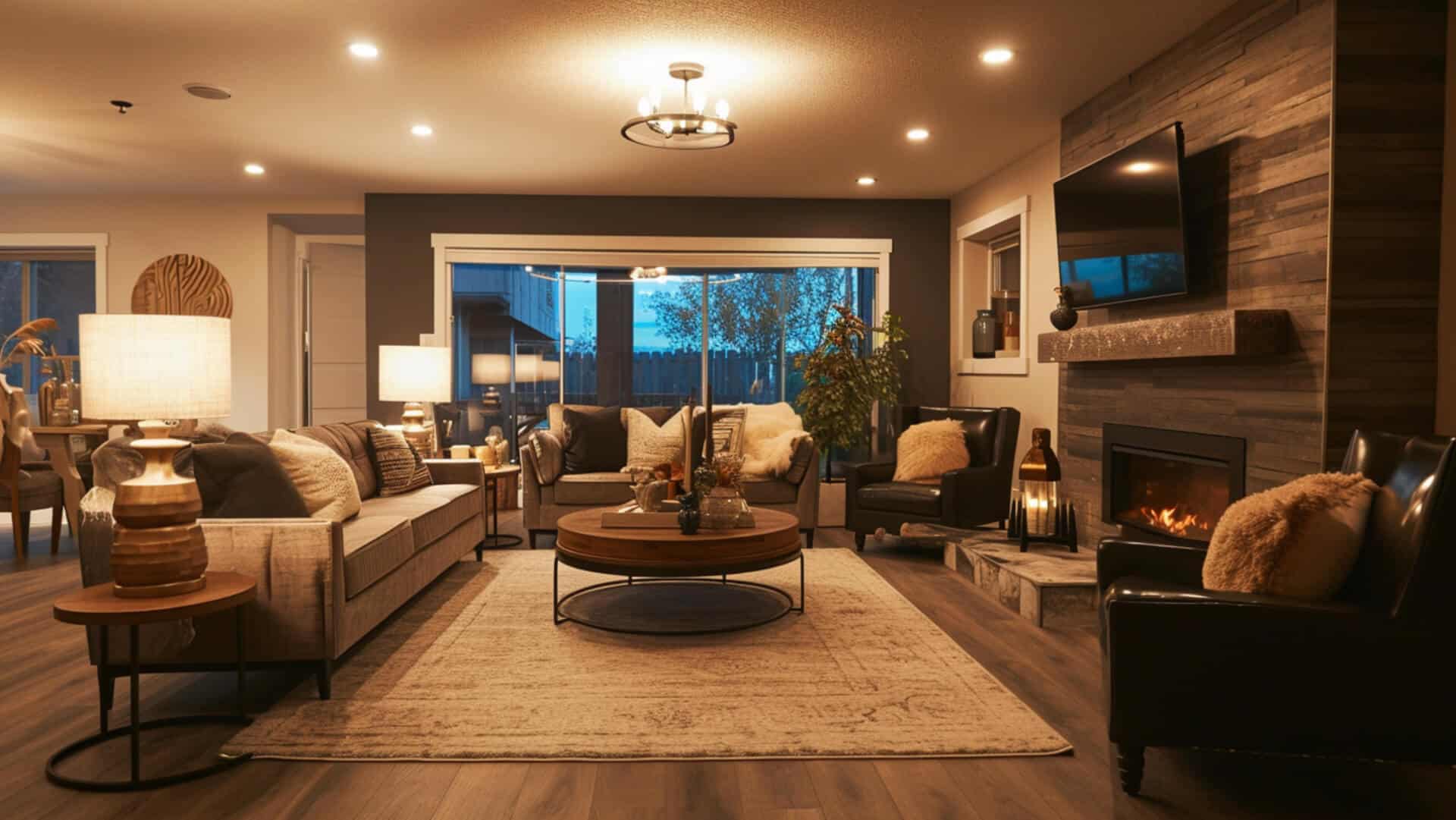1. How can you protect yourself from harmful chemicals while painting and decorating?
Protective clothing is essential to avoid skin irritation or eye damage from paint splatters. Wear overalls, gloves, and safety goggles when painting. Use a respirator mask when working with oil-based paints or in poorly ventilated areas to prevent inhalation of toxic fumes. Keep the work area well-ventilated by opening windows and doors or using fans to circulate air. Avoid smoking or eating while painting as it can lead to ingestion of harmful chemicals. Use drop cloths or plastic sheeting to protect floors and furniture from paint spills and drips. Ensure that ladders are stable before climbing them, never stand on the top rung, and always have someone hold the base for added stability. Use extension poles for hard-to-reach areas instead of standing on chairs or other unstable objects. Store paint cans securely out of reach of children and pets in a cool, dry place away from heat sources such as radiators or direct sunlight.
2. What are the essential safety measures to take when using ladders or scaffolding during a project?
When using ladders or scaffolding during a painting or decorating project, safety measures are essential to prevent falls and injuries. Always ensure that the ladder is stable before climbing it, never stand on the top rung, and have someone hold the base for added stability. Use extension poles for hard-to-reach areas instead of standing on chairs or other unstable objects. If working at height, make sure there is adequate support beneath your feet, and do not rely solely on ladders. Inspect scaffolding, platforms, lifts, and cherry pickers before usage to ensure structural integrity and compliance with safety guidelines. Taking these essential safety measures will help prevent accidents and injuries while working at height during your painting or decorating project.
3. Why is it important to wear appropriate clothing and gear while painting and decorating, and what should you wear?

4. What precautions should be taken when working with electricity around paint or solvents?
When working with electricity around paint or solvents, take precautions to avoid electrical shocks and fires. Ensure all electrical equipment is safe and suitable for its intended purpose, with no exposed wiring or cracked casings. Make sure all power cords are fully extended or retracted without kinks or tangles, and do not overload sockets beyond their rated capacity. Avoid leaving open containers unattended as this could result in spills that may cause injury if stepped on accidentally. Be aware that some solvents used in paints may react with certain plastics or rubbers, causing deterioration or damage over time – check compatibility first. Always follow the manufacturer’s instructions regarding mixing, application, storage, and disposal procedures associated with specific products being used.
5. How can you ensure proper ventilation in your workspace during a painting or decorating project?
Proper ventilation is crucial when painting or decorating to prevent inhalation of toxic fumes. Open windows and doors, or use fans to circulate air. If working in poorly ventilated areas or with oil-based paints, wear a respirator mask. Avoid smoking or eating while painting as it can lead to ingestion of harmful chemicals. Protect yourself and others by ensuring the work area is well-ventilated at all times.
6. What steps should be taken to prevent fires caused by flammable materials used in painting and decorating projects?
Preventing fires caused by flammable materials in painting and decorating projects is crucial. Store all flammable materials separately from non-flammable ones and keep them away from ignition sources such as sparks and flames. Avoid smoking or eating while painting, as it can lead to ingestion of harmful chemicals. Ensure that the work area is well-ventilated by opening windows and doors or using fans to circulate air. Use drop cloths or plastic sheeting to protect floors and furniture from paint spills and drips. Dispose of used rags properly by placing them in an airtight container until they can be disposed of safely. By following these safety measures, you can reduce the risk of fires and create a safer working environment for yourself and others.
7. Why is it crucial to properly dispose of hazardous waste generated during a painting or decorating job, and how do you do so safely?
Proper disposal of hazardous waste is crucial in any painting or decorating job to avoid environmental harm and health risks. Hazardous waste includes used rags, paint cans, and other materials that contain toxic chemicals. To dispose of these items safely, check local regulations and guidelines for hazardous waste management. Typically, hazardous waste should be collected in airtight containers and taken to designated facilities for disposal. Never pour leftover paints down drains as it can pollute water supplies. Remember to label hazardous waste containers correctly and store them securely out of reach of children and pets. By following proper disposal procedures, you can ensure the safety of yourself, others, and the environment.
8. How can you avoid accidents involving sharp tools like knives, scrapers, or saws commonly used in preparation for a paint job?
When preparing for a paint job, sharp tools like knives, scrapers, and saws can pose a serious risk of injury. To avoid accidents, always handle these tools with care and wear appropriate protective gear such as gloves. Keep blades sharp to prevent slipping and use caution when cutting or scraping near your body or other objects. When not in use, store tools in a secure location out of reach of children and pets. Never leave tools unattended where they could be knocked over or stepped on accidentally. And if you do suffer an injury, seek medical attention immediately to prevent further complications. Remember, taking the time to handle sharp tools safely can prevent accidents and keep you safe during your painting project.
9.What emergency procedures should be established before starting any painting or decoration work?

Before starting any painting or decoration project, it’s crucial to establish emergency procedures in case of accidents or incidents. This includes having a first aid kit on hand, knowing the location of fire extinguishers and how to use them, and having an evacuation plan in place. Workers should also be trained on how to handle hazardous materials and know the proper procedures for disposing of them.
It’s important to have emergency contact information readily available and to inform all workers of the location of exits and assembly points. By taking these steps, you can ensure that everyone involved in the project stays safe and prepared for any potential emergencies.
CTAs:
Take the first step towards a safe and successful painting or decorating project by contacting Prestige Decorating London today. Our team of experts can provide professional assistance and advice to ensure your project is completed safely and efficiently. Browse our website for more information on our services, or sign up for our newsletter to receive exclusive tips on home improvement projects. Don’t risk your safety or the quality of your work – trust the professionals at Prestige Decorating London.
Contact Prestige Decorating London for professional assistance with your next project..
Looking for professional assistance with your next painting or decorating project? Look no further than Prestige Decorating London. Our team of experts has the experience and expertise to handle any job, big or small. From choosing the right colors to ensuring proper safety measures are taken, we’ve got you covered. Contact us today to learn more about our services and how we can help you transform your space into something beautiful and functional. Trust us to deliver exceptional results that will exceed your expectations
Browse our website for more information on our services.
For more information on our professional painting and decorating services, browse our website. Our team of experts is dedicated to providing high-quality work while prioritizing safety measures to ensure a safe and successful project. From protective gear to proper disposal methods, we take every precaution to keep you and your property safe. Trust us with your next home improvement project and experience the difference of working with a team that values safety and expertise above all else.
Sign up for our newsletter to receive exclusive tips on home improvement
projects!Stay up-to-date with the latest safety tips and tricks for your home improvement projects by signing up for our newsletter. Our exclusive content is designed to help you tackle any painting or decorating job with confidence and ease. From essential safety measures to expert advice on tools and techniques, our newsletter has everything you need to know to achieve professional-quality results. Don’t miss out on this valuable resource – sign up today and start transforming your home with confidence!










